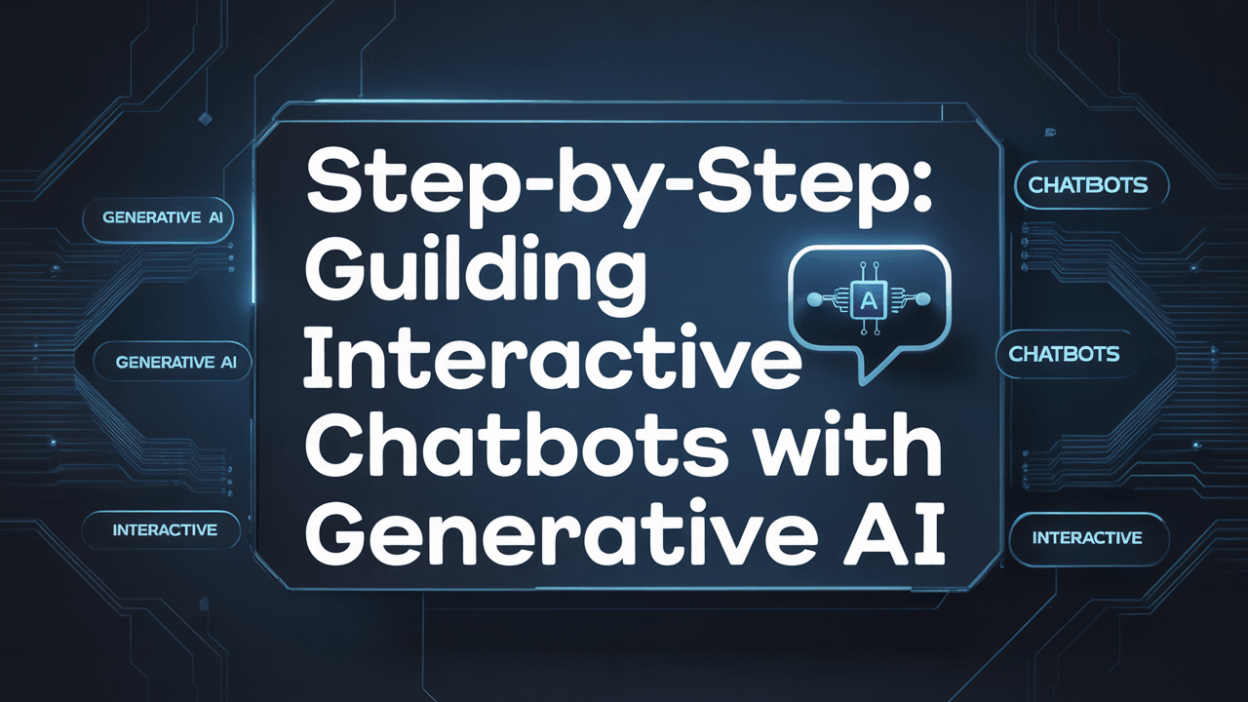Building interactive chatbots with generative AI is an exciting way to enhance customer engagement, streamline workflows, and deliver personalized experiences. Whether you’re a developer, entrepreneur, or part of a small business team, understanding how to build these intelligent systems can open up new opportunities for innovation and efficiency.
Step 1: Define the Purpose and Scope
Before diving into development, it’s crucial to clearly define what you want your chatbot to achieve. Ask yourself questions like: What problems will this chatbot solve? Who is the target audience? Will it be used for customer support, lead generation, internal automation, or something else?
This step sets the foundation for all subsequent decisions, including platform selection, feature design, and training data . A well-defined purpose ensures that your chatbot remains focused and effective in its interactions.
Step 2: Choose the Right Platform and Tools
Once you’ve established the chatbot’s goal, the next step is selecting the right tools and platforms. Many frameworks and services are available today, such as Google Dialogflow, Microsoft Bot Framework, Hugging Face Transformers, or even custom solutions using models like GPT or LLaMA.
For those without coding experience, no-code platforms like Workativ offer streamlined options to build and deploy chatbots with generative AI capabilities . These platforms often provide templates, drag-and-drop interfaces, and integration options that simplify the process significantly.
Step 3: Design the User Interaction Flow
A key element of building an engaging chatbot is designing a natural and intuitive conversation flow. This involves mapping out user intents, possible queries, and the bot’s responses. It also includes defining fallback strategies when the chatbot doesn’t understand a query.
Consider using Natural Language Processing (NLP) techniques to help your chatbot interpret and respond to user inputs more accurately. Effective interaction design ensures users feel heard and assisted, improving satisfaction and retention .
Step 4: Train the Chatbot with Quality Data
Generative AI chatbots rely on large datasets to generate relevant and coherent responses. Training involves feeding your model high-quality, domain-specific data that aligns with your chatbot’s purpose. For instance, a customer service chatbot should be trained on historical support conversations, FAQs, and product information.
You can also fine-tune pre-trained language models like GPT-3 or GPT-4 to suit your specific use case. The better the training data, the more accurate and contextually appropriate the responses will be .
Step 5: Implement and Test
With the model trained, it’s time to implement the chatbot within your chosen environment—whether it’s a website, mobile app, messaging platform (like Facebook Messenger or Slack), or voice interface. Integration typically involves API calls, webhooks, or embedding widgets depending on the platform.
Testing is equally important. Conduct thorough testing with real users to identify gaps in understanding, improve response accuracy, and refine the overall experience. Iterative testing and improvements ensure the chatbot performs reliably under real-world conditions .
Step 6: Deploy and Monitor Performance
After successful testing, deploy your chatbot to the live environment. However, deployment isn’t the final step. Continuous monitoring and optimization are essential to maintain performance. Use analytics tools to track metrics such as response time, user satisfaction, and frequently asked questions.
Feedback loops allow the chatbot to learn from user interactions over time, adapting to new queries and evolving needs. Regular updates based on insights will keep your chatbot relevant and effective .
Conclusion
Building an interactive chatbot powered by generative AI is a multi-step process that combines strategic planning, technical implementation, and continuous improvement. By following these steps—defining a clear purpose, choosing the right tools, designing intuitive flows, training with quality data, implementing effectively, and monitoring closely—you can create a powerful tool that enhances user engagement and operational efficiency.
Whether you’re automating customer support, streamlining internal processes, or exploring conversational commerce, generative AI chatbots offer immense potential. With the right approach, anyone—from developers to SMBs—can harness this technology to drive meaningful results .
